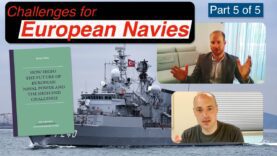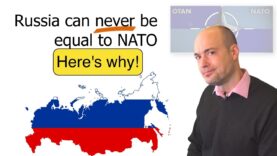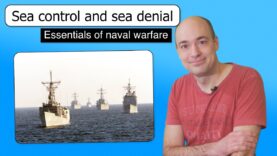What is the Montreux Convention?
Video Summary
The Black Sea has been one of the world’s most militarized hotspots, and to understand it, one must know about the Montreux Convention. It’s as if someone says, “Oh, but you’re forgetting the Montreux Convention, so whatever you think you know is probably wrong.” And sometimes it’s correct, but often it’s not. The Montreux Convention only covers very specific things, and we need to be careful not to assume that everything related to the Black Sea is special. So, what is the Montreux Convention? Officially, it’s “Convention Regarding the Regime of the Straits”, and it regulates the Turkish Straits. Because the Turkish Straits are a chokepoint that controls access to the Black Sea, it’s very important. And the Montreux Convention was written between World War I and World War II, so there are some rules about military use of the Turkish Straits that require a bit of historical context.
The Montreux Convention was signed in 1936, and before that, the straits were regulated by the Lausanne Treaty of 1923, which established some rules about how military ships could pass, but more importantly, it designated the area around the straits as a demilitarized zone. So, there was an area in Turkey where there was to be no military presence. In the 1920s, it made sense, as there was a pacifist movement in international politics, and most states were reducing their military expenditures. But in the 1930s, things were very different. Especially Turkey was concerned about Italy, which had become a powerful fascist mililtary power. So, Turkey proposed a new negotiation, and in 1936, a group of countries met in Montreux, Switzerland. The three most interesting views to balance were those of Turkey, the Soviet Union, and the United Kingdom. Turkey wanted to re-militarize the area and get as much control as possible over the straits. The Soviet Union wanted unhindered passage, so their Black Sea fleet could access the Mediterranean. And the British wanted to limit it, so the Soviet Union wouldn’t gain too much influence in the Mediterranean. And that’s what we have today, a compromise between these three views.
With this historical context, it’s time to look at what the Montreux Convention actually says. First, it states that the Turkish Straits are open to merchant ships, unless they are from a country with which Turkey is at war. Very few restrictions on merchant ships. For warships, there are more restrictions. If Turkey is at war, they can do what they want with the straits. If other states are at war, but Turkey is neutral, the straits are closed to the warring states. In peacetime, the rules are more complex.






























